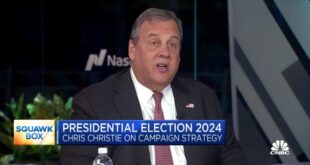The big new idea on taxing the rich is actually a bit of a throwback.
The current debate kicked into overdrive in January, when Ocasio-Cortez, a 29-year-old freshman representative who is not eligible to run for president because she’s six years too young, floated a 70 percent marginal tax rate for $10 million in income and above. Her proposal terrified the billionaire elite last month at the annual World Economic Forum in Davos, Switzerland. The last time the U.S. saw a headline number that high was 1981, Republican Ronald Reagan’s first year in office. Those rates were eventually slashed during Reagan’s tenure.
For decades, however, the top marginal tax rate hovered between 63 percent and 92 percent. While the gap between the poor and wealthy was smaller then, it is unclear how much tax policy on its own influenced gross domestic product growth during that span.
The marginal rate for the top U.S. tax bracket spiked to 67 percent in 1917 as America pushed to fund World War I, according to the Tax Policy Center. After temporarily falling, the highest tax rate rose again to 63 percent in 1932, during the Great Depression.
The rate on the wealthiest Americans never dipped below 69 percent from then until 1982, when it dropped to 50 percent. It held above 90 percent from 1951 through 1963. Now, the top marginal rate sits at 37 percent.
The true disparity between the tax burden today and the mid-20th century may not be quite so large. The Tax Foundation, citing research from Saez, Zucman and French economist Thomas Piketty, notes that the top 1 percent paid about 6 percentage points more in federal, state and local income taxes in the 1950s than it does today.
The U.S. had a more equitable distribution of wealth and income during those periods of higher taxes on the wealthiest Americans. The top 0.1 percent of Americans held roughly 10 percent of wealth in 1960, versus about 20 percent today. The wealth of the bottom 90 percent of Americans dipped from just under 30 percent to about 25 percent now.
Those wary of higher taxes on the wealthy warn the policy changes would stifle economic growth and deter innovation from talented entrepreneurs. A 2014 Tax Foundation analysis suggested a wealth tax as previously proposed by Piketty would shave about $800 billion off gross domestic product annually and depress wages.
Gary Cohn, the former Goldman Sachs chief operating officer and economic advisor to Trump, argued last week that hiking taxes on the wealthy “would be harmful to the economy.”
Proponents of the recent round of tax cuts — spurred through Congress in part by Cohn — have argued that the measure has helped boost economic output by spurring hiring and investment. Tax cuts have also traditionally been seen as a reliable way to stimulate household spending by putting more money in consumers’ pockets.
The U.S. economy has weathered much higher tax rates in the past 100 years with little apparent effect on the ebb and flow of economic growth, though. The highest marginal rate topped 90 percent during World War II, falling to 70 percent from 1965 to 1981, a period including economic expansion and recession. Those deep Reagan era tax cuts helped spur growth during that decade, but didn’t prevent subsequent recessions that began in 1990, 2001 and 2007.
 EU News Digest Latest News & Updates
EU News Digest Latest News & Updates



